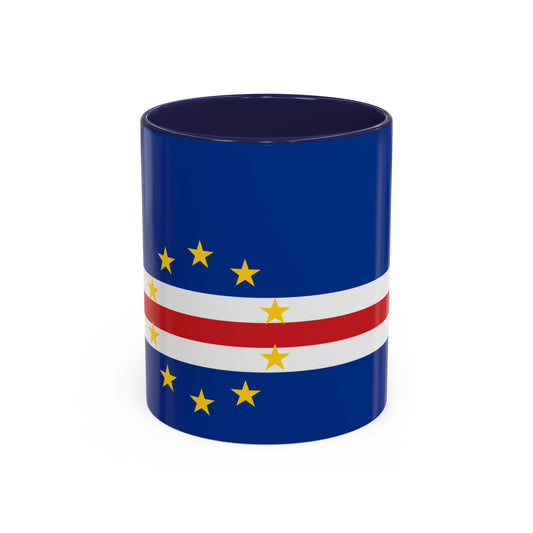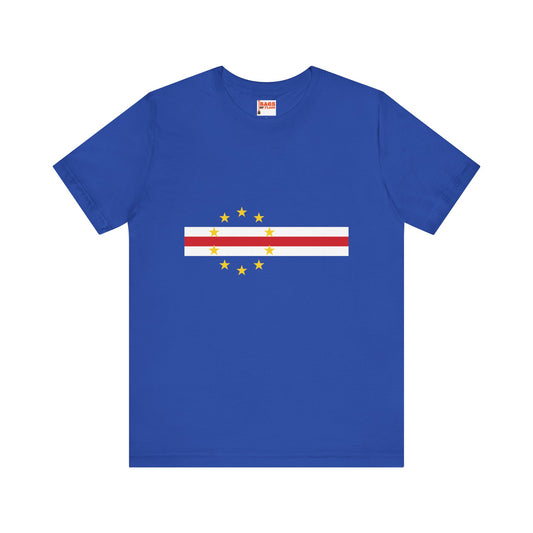-
Cape Verde Pillow
Regular price $22.65 USDRegular priceUnit price / per -
Cape Verde Backpack
Regular price $59.79 USDRegular priceUnit price / per -
Cape Verde Leather Patch Hat
Regular price $18.85 USDRegular priceUnit price / per -
Cape Verde Flag Sweatshirt
Regular price $34.15 USDRegular priceUnit price / per -
Cape Verde Inspired Sweatshirt
Regular price $34.15 USDRegular priceUnit price / per -
Cabo Verde Sweatshirt
Regular price $34.15 USDRegular priceUnit price / per -
Cape Verde Sweatshirt
Regular price $34.15 USDRegular priceUnit price / per -
Cape Verde Mug
Regular price $11.65 USDRegular priceUnit price / per -
Cape Verde Trucker Cap
Regular price $14.90 USDRegular priceUnit price / per -
Cape Verde Flag on T-shirt
Regular price $22.79 USDRegular priceUnit price / per -
Cape Verde Hoodies
Regular price $34.40 USDRegular priceUnit price / per -
Cape Verde Flag on Hoodie
Regular price $34.40 USDRegular priceUnit price / per -
Cape Verde Inspired Hoodies
Regular price $34.40 USDRegular priceUnit price / per -
Cape Verde T-shirts
Regular price $22.79 USDRegular priceUnit price / per -
Cape Verde Inspired T-shirt
Regular price $22.79 USDRegular priceUnit price / per -
Cabo Verde T-shirts
Regular price $22.79 USDRegular priceUnit price / per -
Cabo Verde Hoodies
Regular price $34.40 USDRegular priceUnit price / per
Collection: Cabo Verde / Cape Verde
The Cape Verde flag, also known as the Cabo Verde flag, symbolizes national pride and identity for the island nation of Cape Verde. While the flag's colors are well-known, it has unique aspects and protocols that go beyond its design. We will explore the flag's history, symbolism, current relevance, and additional facts.
Overview of the Cape Verde Flag

The flag of Cape Verde features a striking horizontal bicolor of blue and white, accented in the center by a circle of ten yellow stars. Each design component carries a significant meaning: the expansive blue represents the Atlantic Ocean, encircling and defining the archipelago. At the same time, the serene white symbolizes the peace and unity that bind the islands together. The ten stars, each corresponding to one of the main islands of Cape Verde, are arranged in an elliptical arch to mirror their geographical layout. This thoughtful arrangement emphasizes the interconnectedness and solidarity among the islands, underscoring the nation's collective identity. The flag's design beautifully encapsulates the physical characteristics of the islands and the spirit of its people, making it a profound emblem of Cape Verdean pride and heritage.
Historical Context of the Cape Verde Flag

Adopted on September 22, 1992, the flag of Cape Verde marks a significant chapter in the nation's journey towards sovereignty and self-identity. This was a pivotal moment, coming 17 years after Cape Verde declared independence from Portugal in 1975. The need for a new flag was driven by a desire to forge a distinct national identity separate from the colonial past and reflect the nation's aspirations and values. Before this, Cape Verde had flown the flag of its colonial ruler, Portugal, and later, a flag that symbolized its connection to the African Party for the Independence of Guinea and Cape Verde (PAIGC).
The design process of the current flag involved contributions from a group of esteemed Cape Verdean artists and intellectuals. Their mission was to encapsulate the essence of Cape Verde's culture, geography, and aspirations for the future within the flag's symbolism. The transition to this new flag underscored a broader shift within the country towards a democratic government and a more autonomous national stance in the post-colonial era. This change not only reflected Cape Verde's evolving political landscape but also cemented the archipelago's place on the world stage as a sovereign entity with its own unique identity and values.
Symbolism Behind the Cape Verde Flag
The vivid hues and elements of the Cape Verde flag are imbued with significant symbolism that resonates deeply with the nation's identity and aspirations. The expansive blue dominating the flag signifies the vast Atlantic Ocean surrounding the island nation, a constant reminder of the geographical isolation and the maritime heritage that has shaped its history. The white stripe represents peace and unity, core values underpinning Cape Verde's society and governance. It highlights the nation’s ongoing quest for harmony within its borders and external relations.
The circle of ten yellow stars is the most symbolic feature, each star standing for one of the archipelago's main islands. This arrangement is not merely a geographical reference but also a symbol of unity and solidarity among the islands, emphasizing their equal importance to the nation's identity despite their varying sizes and populations. The elliptical layout of the stars mirrors the islands' natural geographic distribution, reinforcing the idea of Cape Verde as a cohesive yet diverse entity. These symbols reflect a balance between honoring the past and looking toward a future of peace, unity, and progress.
Current Relevance of the Cape Verde Flag
Today, the Cape Verde flag remains a prominent emblem at the forefront of national consciousness. Its display across the country, from flagpoles in bustling market squares to the quiet classrooms of rural schools, symbolizes the nation's sovereignty and its unity and aspirations. On national holidays, such as Independence Day, celebrated on July 5th, the flag takes center stage in parades and festivities, encapsulating the pride of the Cape Verdean people in their country's journey and achievements.
It also plays a critical role in military ceremonies, where the flag's presence reinforces the commitment of the armed forces to protect the nation's ideals and territory. Beyond these formal occasions, the Cape Verde flag is a fixture in everyday life, serving as a constant reminder of the collective identity and shared values that bind the islands and their people together. Its significance extends into the international arena, where it represents Cape Verde on the global stage, symbolizing the country's engagement and cooperation with nations around the world.
Additional Facts and Protocols Regarding the Cape Verde Flag
In the realm of etiquette surrounding the Cape Verde flag, several specific practices ensure its respectful presentation. A paramount rule dictates that during its hoisting or lowering, the flag must be treated with solemn respect, ensuring it remains unsullied by contact with the ground. When positioned vertically, an important guideline to remember is that the blue stripe should be oriented to the observer's left, maintaining the integrity of the flag's symbolism and design as intended.
A poignant practice involves the flag being flown at half-mast during periods of national mourning or to honor significant figures who have passed away, demonstrating the country's collective grief and respect. This gesture underlines the flag's role as a national symbol, capable of conveying deep emotions and solidarity among the Cape Verdean people.
In 2013, the flag found itself at the heart of a national debate when proposals emerged suggesting changes to its design. This proposal sparked considerable public discussion, underscoring the deep connection and pride the Cape Verdean people feel towards their flag. The widespread opposition ultimately led to the abandonment of the proposed changes, highlighting the flag's untouchable status as a core emblem of national identity and unity. This episode serves as a testament to the powerful symbolism and emotional attachment associated with the Cape Verde flag, further cementing its status as an immutable symbol of the nation's heritage and aspirations.


































